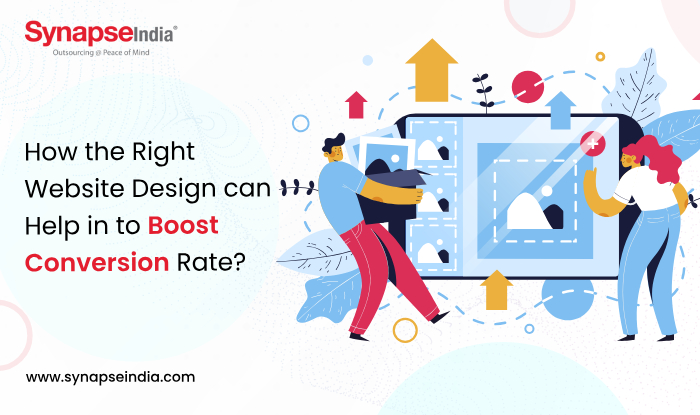 30 Apr 2024
30 Apr 2024“The right website design plays a crucial role in boosting conversion rates by enhancing user experience, building trust, and guiding visitors towards desired actions.”

In the present digital era, having an online presence is essential for organizations, as the significance of website design is indisputable. In addition to acting as a company's online storefront, a well-designed website is essential for increasing conversions and income. We'll look at the substantial influence that a well-designed website can have on increasing conversion rates in this blog. We will explore important design components and tactics that companies may utilize to optimize their websites for higher conversion rates, from the user experience (UX) to visual aesthetics. Come along as we explore how a well-designed website may maximize online performance and propel corporate success.

Achieving success in the highly competitive world of internet business requires optimizing conversions. The practice of improving a website or digital platform to raise the proportion of users that complete a desired action, like making a purchase, subscribing to a newsletter, or completing a contact form, is known as conversion rate optimization, or CRO. Businesses may enhance overall performance metrics and efficiently move visitors through the conversion funnel by optimizing several aspects of their websites. We will examine the foundations of conversion rate optimization in this blog, as well as important tactics, industry best practices, and resources to assist companies in realizing the full value of their online presence. Come along as we explore the fundamental ideas behind CRO and see how it may provide significant outcomes.
Macro conversions are the main objectives or crucial activities that have a direct effect on the bottom line of the company. Completing a purchase, signing up for a service, or obtaining a quote are examples of these actions. The percentage of website visitors who successfully execute these intended actions is measured by the macro conversion rate.
Micro conversion rates frequently come before macro conversions in the conversion funnel. Putting products in a shopping cart, downloading a free resource, or subscribing to a newsletter are a few examples of micro conversions. The micro-conversion rate monitors the percentage of visitors who take these initial steps.
Businesses may assess their digital marketing activities more successfully, pinpoint areas for development, and execute focused strategies to increase overall conversion performance by having a thorough understanding of these various sorts of conversion rates.
Due to its ability to impact user behavior and facilitate desired actions that result in conversions, website design is a critical component in Conversion Rate Optimization (CRO). The following are some ways that website design affects CRO:
Users can locate what they're looking for and accomplish desired tasks more easily when a website has intuitive navigation, a clear layout, and user-friendly interfaces. A well-designed website increases conversions by lowering friction and irritation.
Websites that are visually appealing and have excellent graphics, captivating photography, and unified branding make a good first impression and inspire confidence in users. In the end, eye-catching design features can increase conversion rates by drawing users in, keeping them interested, and motivating them to explore more.
Because mobile surfing is becoming more and more common, responsive design makes sure that websites adjust to fit various screen sizes and devices. A website that is optimized for mobile devices offers a unified user experience on all platforms, meeting the demands of users on the go and optimizing conversion rates.

CTAs influence user behavior and encourage action through thoughtful placement, design, and messaging. Conversion goals, such as purchasing a product, subscribing to a newsletter, or asking for more information, are guided by well-designed call-to-actions (CTAs) that are conspicuously displayed, employ compelling language, and have a clear value proposition.
Websites that load quickly not only increase user satisfaction but also decrease bounce rates and boost conversion rates. By using effective coding, image compression, and caching strategies to optimize website performance, users may access material more quickly and easily, which reduces irritation and abandonment.
Secure payment methods, customer testimonials, trust badges, privacy policies, and other components of a professional and trustworthy website design soothe visitors and allay worries about security and validity. Conversions are boosted and brand confidence is maintained when trust is established through design.
Businesses may optimize their conversion rates and accomplish their objectives more successfully in the digital landscape by giving priority to efficient website design techniques that improve user experience, engage visitors, and motivate action.
It is impossible to overestimate the influence of website design on conversion rate. In addition to improving user experience, a well-designed website is essential for increasing conversions. Businesses can create an engaging online presence that motivates visitors to perform desired activities by emphasizing features like mobile friendliness, visual appeal, optimal call-to-actions, rapid page load time, and trust and trustworthiness. In the end, optimizing sales, increasing conversion rates, and succeeding in the cutthroat online environment of today all depend on investing in the appropriate website design tactics.

 23 Jan 2015
23 Jan 2015
